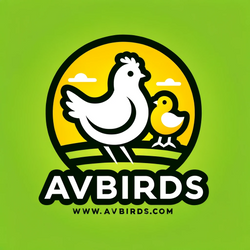Picture this: it’s a crisp winter morning and the mercury has dipped below zero, yet your flock is clucking around happily. If you’re hunting for cold hardy chickens that shrug off frostbite and keep laying through snowstorms, you’ve come to the right place.
In this guide, you’ll learn which winter-ready breeds thrive in sub-zero temps, how to prep your coop, feeding tweaks to boost warmth, and tricks to keep the eggs rolling in.
Understand Cold Hardy Chickens
Knowing what makes a bird winter-tough helps you choose flock members that stay healthy and productive when temperatures plunge.
What Makes a Breed Hardy
Cold-resilient chickens share a few key traits:
- Compact combs (pea, rose, walnut) to avoid frostbite
- Dense feathering, often with feathered feet or a “beard”
- Ample body fat for insulation
- Sturdy frame that conserves heat
Ever wonder why some breeds barely notice frost? These features trap air close to the skin, creating a natural down jacket. Chickens can cope with temperatures down to –10 °C with no issues, especially if they’re true winter-hardy breeds (Poultry Keeper).
Comb Size and Feathering
Comb and wattle size directly impact frostbite risk. Breeds with small pea combs or rose combs have less exposed flesh, cutting down on heat loss. Feathered feet—seen in cochins and some Orpingtons—add an extra insulating layer.
Select Winter-Ready Breeds
Ready to pick your lineup? Here are several breeds proven to over-winter well in northern climates.
| Breed | Comb Type | Feathering | Egg Color | Cold Tolerance |
|---|---|---|---|---|
| Buff Orpington | Single | Fluffy, heavy | Brown | Excellent |
| Barred Rock | Single | Dense | Brown | Excellent |
| Wyandotte | Rose | Dense, soft | Brown | Very Good |
| Black Australorp | Single | Glossy, sleek | Brown | Very Good |
| Ameraucana | Pea | Medium | Blue | Good |
| Easter Egger | Pea/Small | Medium | Green | Good |
Orpington and Barred Rock
Buff Orpingtons and Barred Rocks are top picks for beginners. They lay steadily through winter and handle sub-zero temps with ease.
- Buff Orpingtons: calm, kid-friendly, and hardy—check our buff orpington chicks
- Barred Rocks (Plymouth Rocks): classic dual-purpose birds—see barred rock chicks
Wyandotte and Australorp
If you want a bit of flair, these two breeds combine showy plumage with winter toughness.
- Wyandottes: rose combs plus soft, insulating feathers—ideal for –20 °C conditions
- Australorps: legendary egg layers with a glossy black coat—get started with black australorp chicks
Ameraucana and Easter Egger
Looking for colored eggs in winter? These “Easter Egger” types bring blue-green hues to your carton.
- Ameraucanas: true heritage birds with pea combs—find ameraucana chicks
- Easter Eggers: hybrid variety, hardy and friendly—try easter egger chicks
Prepare Your Coop
Even the hardiest chicken needs a snug, dry coop to thrive. Here’s how to winter-proof your setup.
Insulate and Ventilate
Good insulation keeps warmth in, while strategic vents prevent moisture buildup and frostbite. Follow these tips:
- Line walls with rigid foam or straw bales
- Install adjustable vents near the roof ridge
- Position vents so draft bypasses roosts
Too little airflow leads to ammonia buildup and wet bedding, which chills birds. Too much draft chills them directly. Aim for gentle cross-ventilation, per University of Minnesota guidelines (University of Minnesota Extension).
Provide Roosts and Bedding
Chickens huddle on high roosts to trap body heat underneath. Give each bird at least 9 inches of perch space, 12 inches off the floor.
Manure Trays vs Deep Bedding
- Manure Trays: quick cleanup, keeps droppings dry
- Deep Bedding: layers of straw or wood shavings trap heat, break down over time
Pick one or combine both—just stir bedding weekly to avoid soggy spots.
Adjust Feeding Strategies
Cold weather works chickens harder to stay warm. You’ll see appetites spike by up to 25 percent in winter.
Boost Calories and Protein
Offer a higher-energy ration late afternoon so they burn calories through the night:
- Increase regular feed by 10–25 percent
- Provide scratch grains (in moderation) for a treat
- Add supplemental protein like mealworms or sunflower seeds (Silver Fox Farm)
Supply Grit and Water
Grit helps grind tough winter feed. Free-choice poultry grit prevents digestive slowdowns when hens can’t scavenge for grit outside. Always keep water unfrozen by:
- Using a heated base or bowl stand
- Checking and refreshing water every few hours
Maintain Egg Production
Shorter days mean fewer eggs. You can help your hens keep laying at a steady pace.
Add Supplemental Lighting
Aim for at least 14 hours of light daily to simulate longer days. Install a low-wattage bulb on a timer in your coop, turning on around dawn. Consistency is key—avoid sudden light changes that can stress birds.
Monitor Flock Health
Cold stress shows up as lowered appetite, shivering, or frostbite on combs and wattles. Keep an eye on vulnerable breeds and:
- Apply petroleum jelly to comb tips to ward off frostbite (Sarasota Magazine)
- Segregate any ailing hens for a quick recovery
- Check feet and toes daily for signs of frostbite
Key Takeaways
- Choose breeds with small combs and dense feathering for top winter performance
- Buff Orpingtons, Barred Rocks, Wyandottes, and Australorps excel in sub-zero temperatures
- Insulate your coop, balance ventilation, and provide elevated roosts
- Bump up calories, protein, and grit to fuel cold-weather metabolism
- Use timed lighting to sustain winter egg production
Ready to expand your flock with hardy hens? Browse our started pullets for sale or explore the breed selector to find your perfect match.
